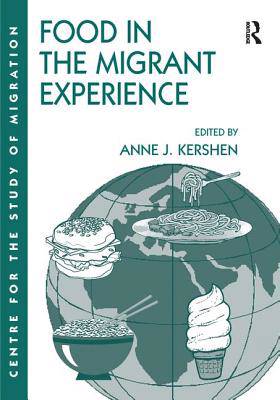
- Afhalen na 1 uur in een winkel met voorraad
- Gratis thuislevering in België vanaf € 30
- Ruim aanbod met 7 miljoen producten
- Afhalen na 1 uur in een winkel met voorraad
- Gratis thuislevering in België vanaf € 30
- Ruim aanbod met 7 miljoen producten
Zoeken
Food in the Migrant Experience
€ 75,95
+ 151 punten
Omschrijving
At its most basic, food is vital to our survival there can be no form of life without it. But in economically developed and thriving societies there is more to eating and drinking than just surviving. As the centuries have passed, the marketing, preparation and presentation of food has become an intrinsic part of the modern consumer society. Food operates in the religious sphere too, with consumption and abstinence playing their part in religious ritual whilst methods of animal slaughter have moved into the political, as well as the religious arena. Food not only sustains the migrant on both the real and metaphorical journey from home to elsewhere, it also provides a bridge between the familiar and the unfamiliar. Food acts as a catalyst for cultural fusion and excitement but it can also endanger: change of diet all too frequently creating as many health problems as it resolves. Its multi-disciplinary nature enables Food in the Migrant Experience to address all the above issues in chapters written by leading academics in the fields of migration, economics, nutrition, medicine and history. As we continue to explore the minutiae of the immigrant experience, this book will be essential reading to all those engaged in the study of migration.
Specificaties
Betrokkenen
- Uitgeverij:
Inhoud
- Aantal bladzijden:
- 268
- Taal:
- Engels
- Reeks:
Eigenschappen
- Productcode (EAN):
- 9781138251359
- Verschijningsdatum:
- 26/08/2016
- Uitvoering:
- Paperback
- Formaat:
- Trade paperback (VS)
- Afmetingen:
- 152 mm x 216 mm
- Gewicht:
- 385 g

Alleen bij Standaard Boekhandel
+ 151 punten op je klantenkaart van Standaard Boekhandel
Beoordelingen
We publiceren alleen reviews die voldoen aan de voorwaarden voor reviews. Bekijk onze voorwaarden voor reviews.










